Most people barely give Krabi Town a second glance. If they visit at all, they stay overnight on their way to Railay Beach, Koh Lanta, or the Phi Phi Islands. But during a recent visit to Railay Beach, I decided to stop over in the town of Krabi for three days and was pleasantly surprised by what I found.
The Khao Khanap Nam mountains initially piqued my interest in Krabi Town. Located just north of the city center, the twin Karst limestone stacks stand on opposite shores of the Krabi River. They thrust some 300 feet into the air from a perfectly flat plain, as if a giant from the underworld poked his finger into the dirt above his head. The stacks lean away from one another in a gentle Yogic back bend, perhaps an attempt to flee from cycles of river flooding.
I did not tour the caves at Khao Khanap Nam (these old hips and knees no longer do well on jagged, uneven surfaces), but it is a simple matter to hire a long-tail boat at Chao Fa Pier to visit them. A 15-minute ride will take you past thick mangrove forests to the foot of the hills, where you can walk into the caves and inspect a wonderland of stalactites and stalagmites. I opted instead for a distant view of Khao Khanap Nam. As the sun set over the riverside promenade, tangled green Rasta tresses cascaded down the stacks, thirsting for water. Patches of exposed limestone shone bronze and orange in places where the braids parted. Taller, more jagged Karst formations created an extraordinary backdrop for the idyllic scene.

Typically, for me, I ignored the more touristy things to do in Krabi. I spent my two remaining days nosing around town, trying to connect with the local culture. My first surprise was the curious stoplights at intersections on Maharaj Road. Cavemen sculptures stand upon concrete columns, carrying suitcases that hold the red, yellow, and green crossing signals. As if the street light wasn’t bizarre enough, someone had placed white masks over the mouths of the cavemen, no doubt a reminder to practice COVID safety measures. Other columns hold sculptures of elephants, eagles, and an otter. The stoplights apparently pay homage to ancestors who inhabited the region up to 30,000 years ago. Pottery, stone tools, and rock art discovered in caves and on cliffs indicate these early inhabitants considered such animals to be sacred.
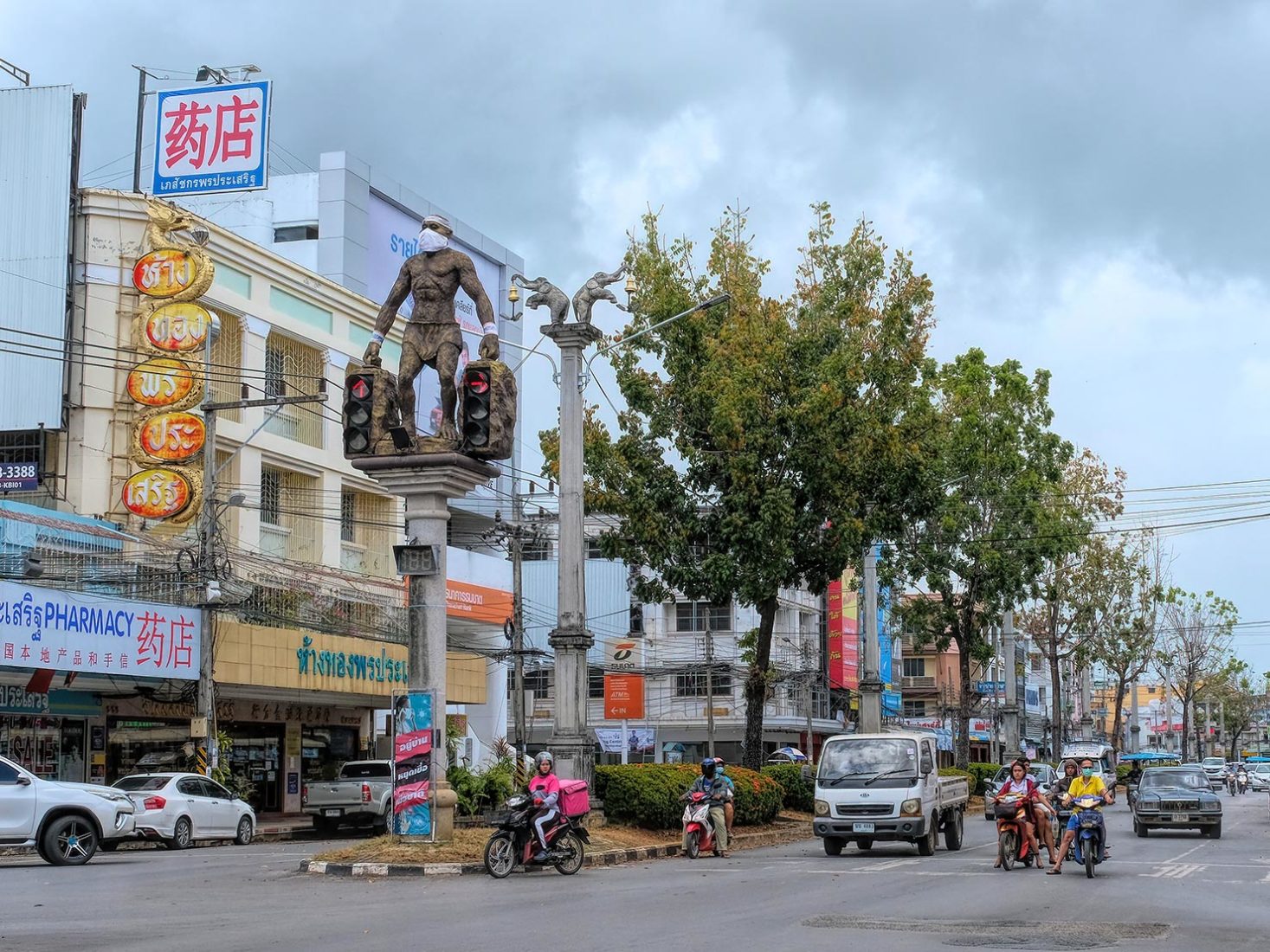
Further down Maharaj Road I found Wat Kaew Korawaram, perched on a hill that overlooks the city center. The imposing staircase leading to the top is lined on both sides by golden nagas (dragon serpents) that slither down the banisters. The Viharn (worship hall) occupies the center of a half-acre plaza at the top of the hill, and displays that surround it on three sides tell the story of Buddha’s life.
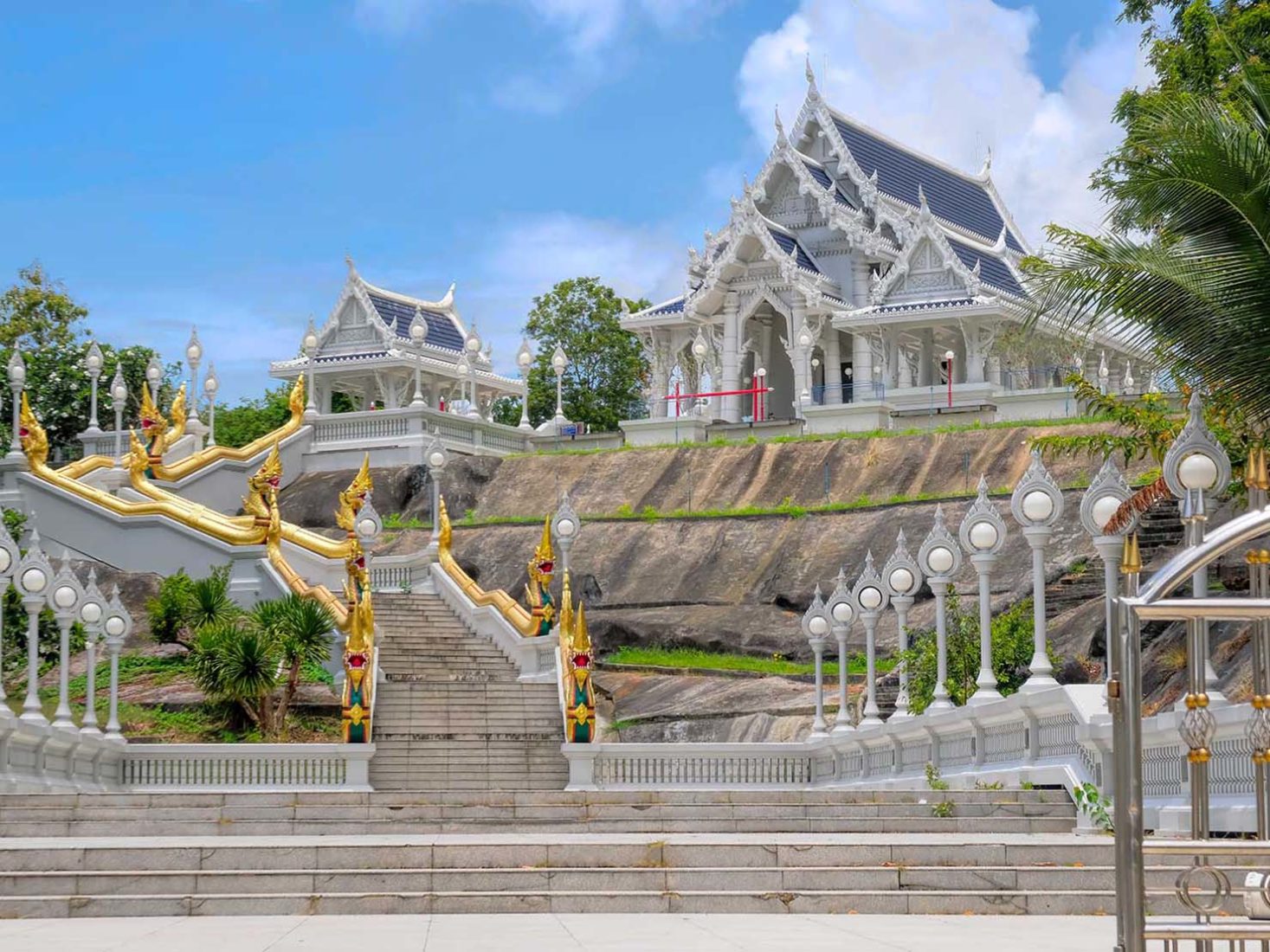
Half a block away I stumbled upon an old, traditional teak building that had long been home to the Wat Kaew Korawaram Museum. From the boundary stones that surround the building, it was obvious that it had once been the consecrated Ordination Hall for Wat Kaew Korawaram. Officials on site kindly let me peek through the front door. Wooden beams and carvings were piled up along the inside walls, waiting to be moved. I was disappointed that the museum had been relocated closer to downtown. A newer facility couldn’t possibly match the historic atmosphere of the old Ordination Hall. Perhaps more space was required for exhibits, but I do hope they restore the original building and put it to good use.
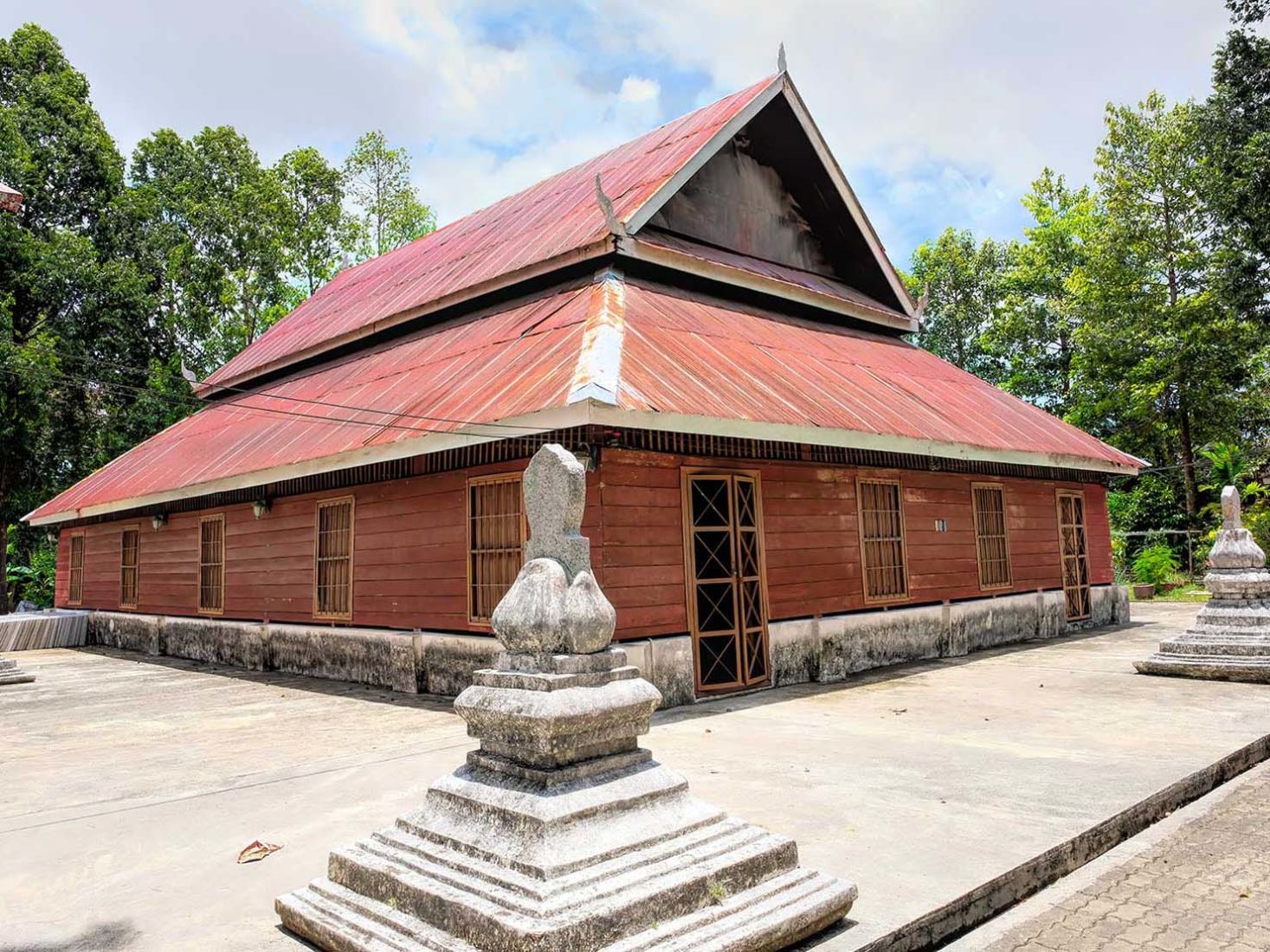
On my way back down to the river, I found a block-long wall that was covered with paintings depicting local culture. Beyond that was the municipal center, where government buildings surrounded the City Pillar Shrine, and a massive sculpture of a herd of elephants stood at the entrance to the complex.
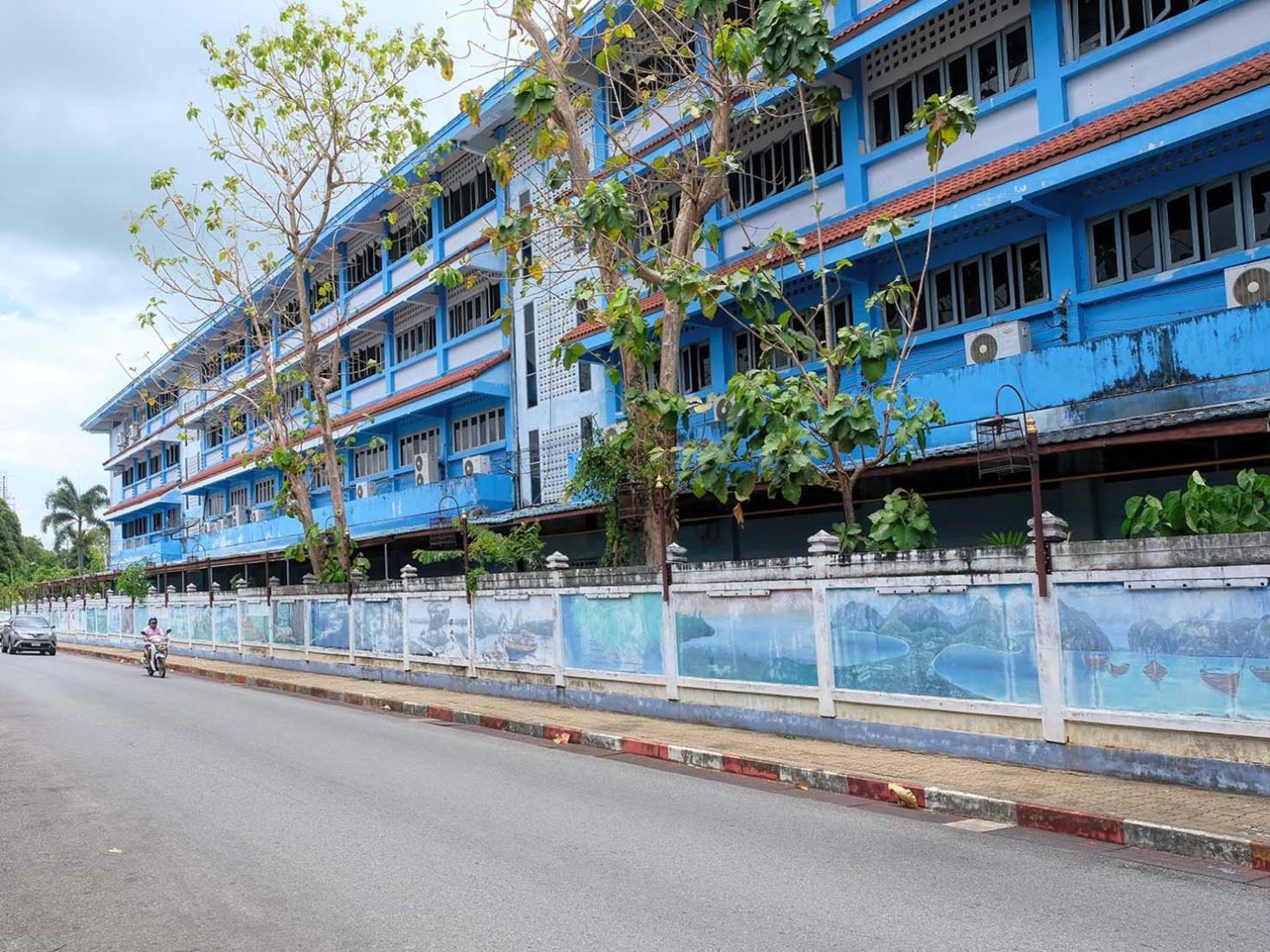

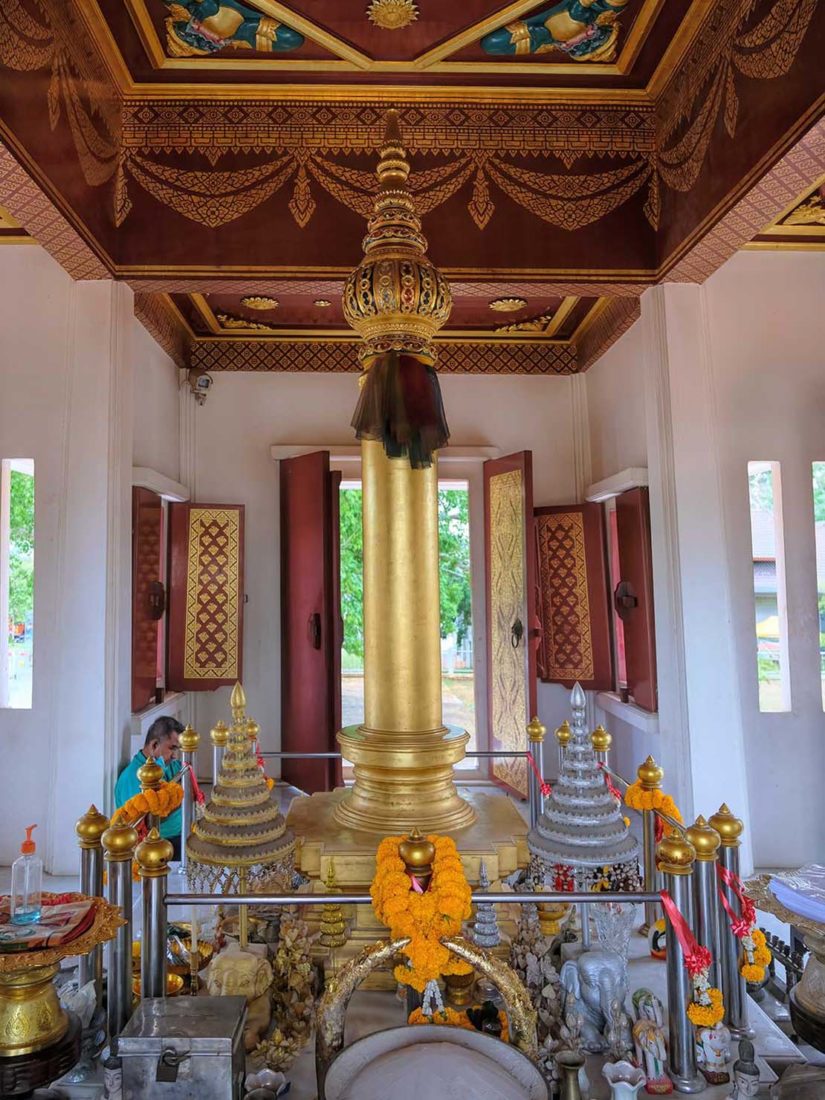

On my final day in Krabi Town I decided to follow the riverfront promenade to the southernmost part of town. A brick pathway wandered through parks, children’s playgrounds, flower gardens, and sporting complexes. Families picnicked in the sunshine. Men stood in a wide circle playing Sepak Takraw, a game that requires keeping a rattan ball in the air without using one’s hands. Children tore down the pathway on tricycles. Vendors hawked everything from ice cream to full curry meals from stainless steel carts. And interspersed among it all were outdoor sculptures of every imaginable type. One featured a giant crab. Another depicted a nesting family of eagles. Some modern pieces left interpretation to the viewer.
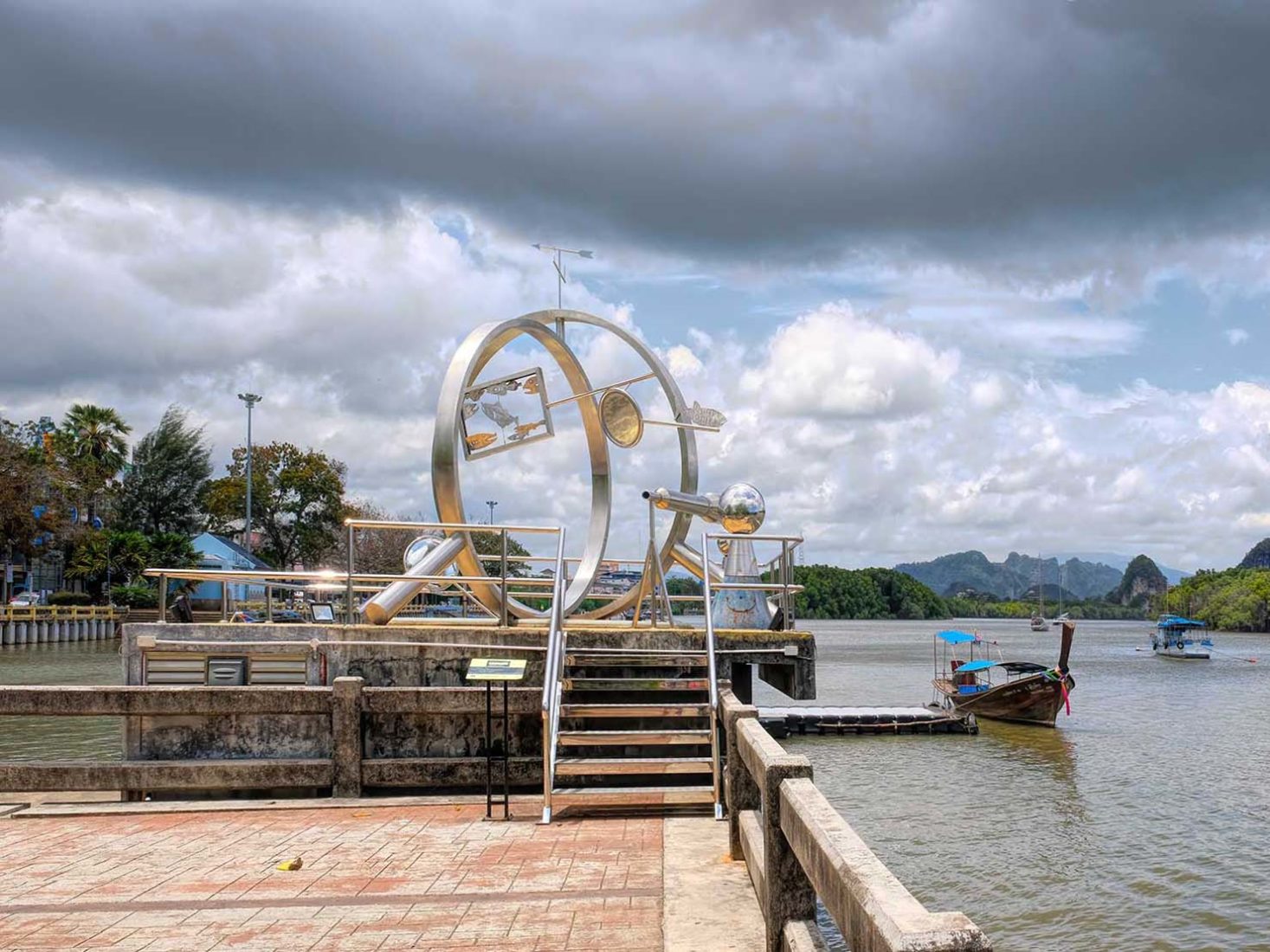
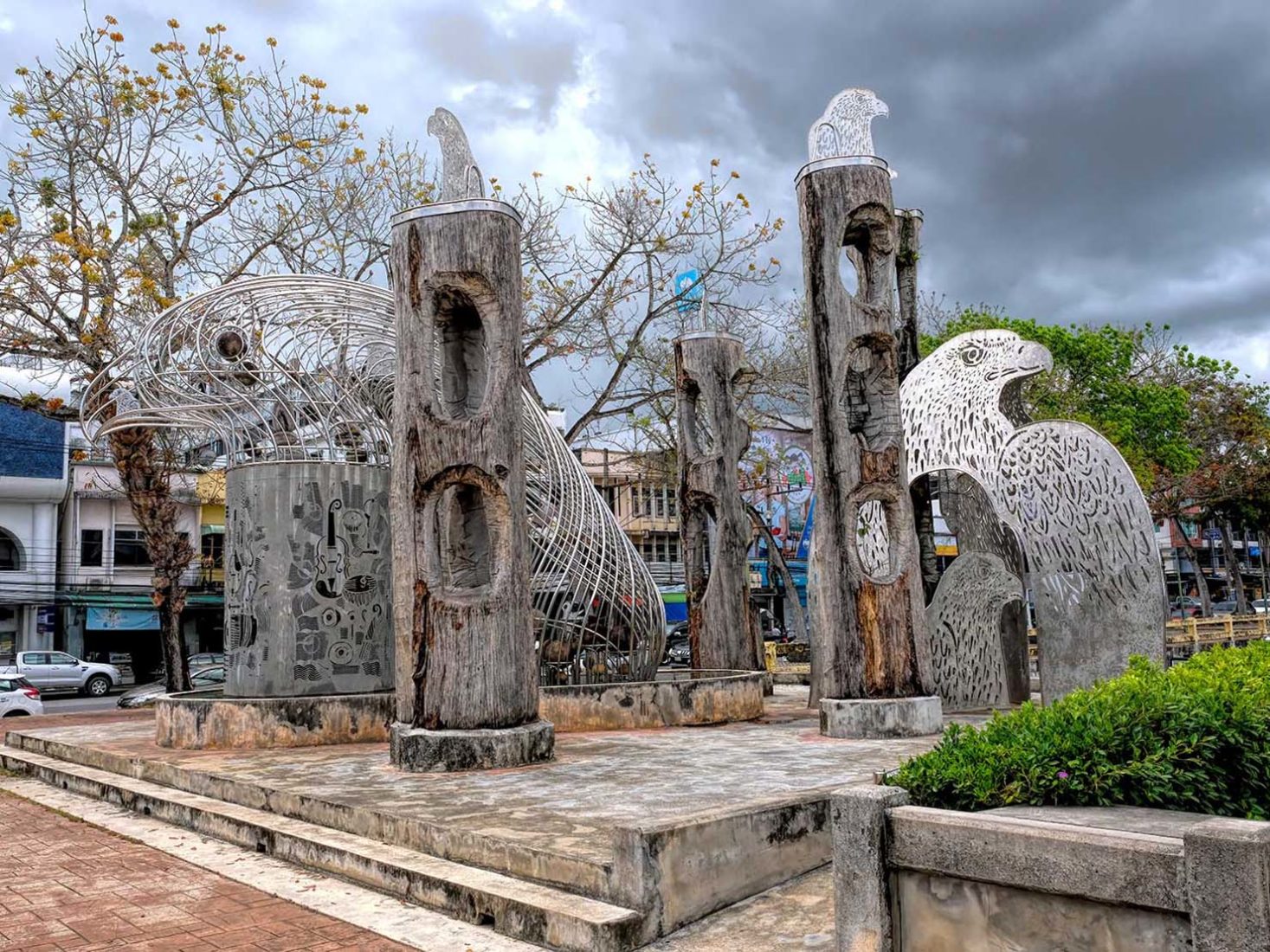
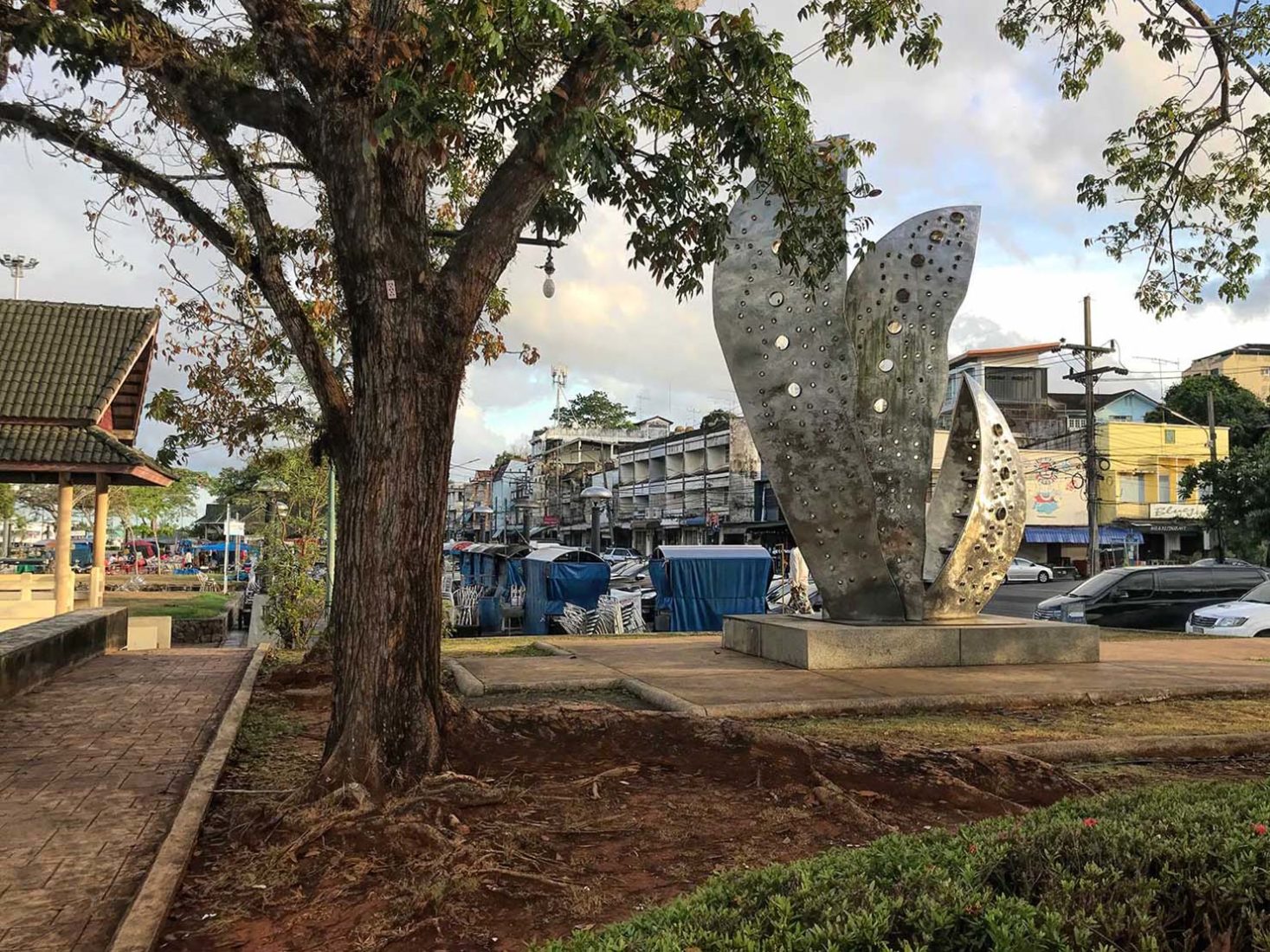
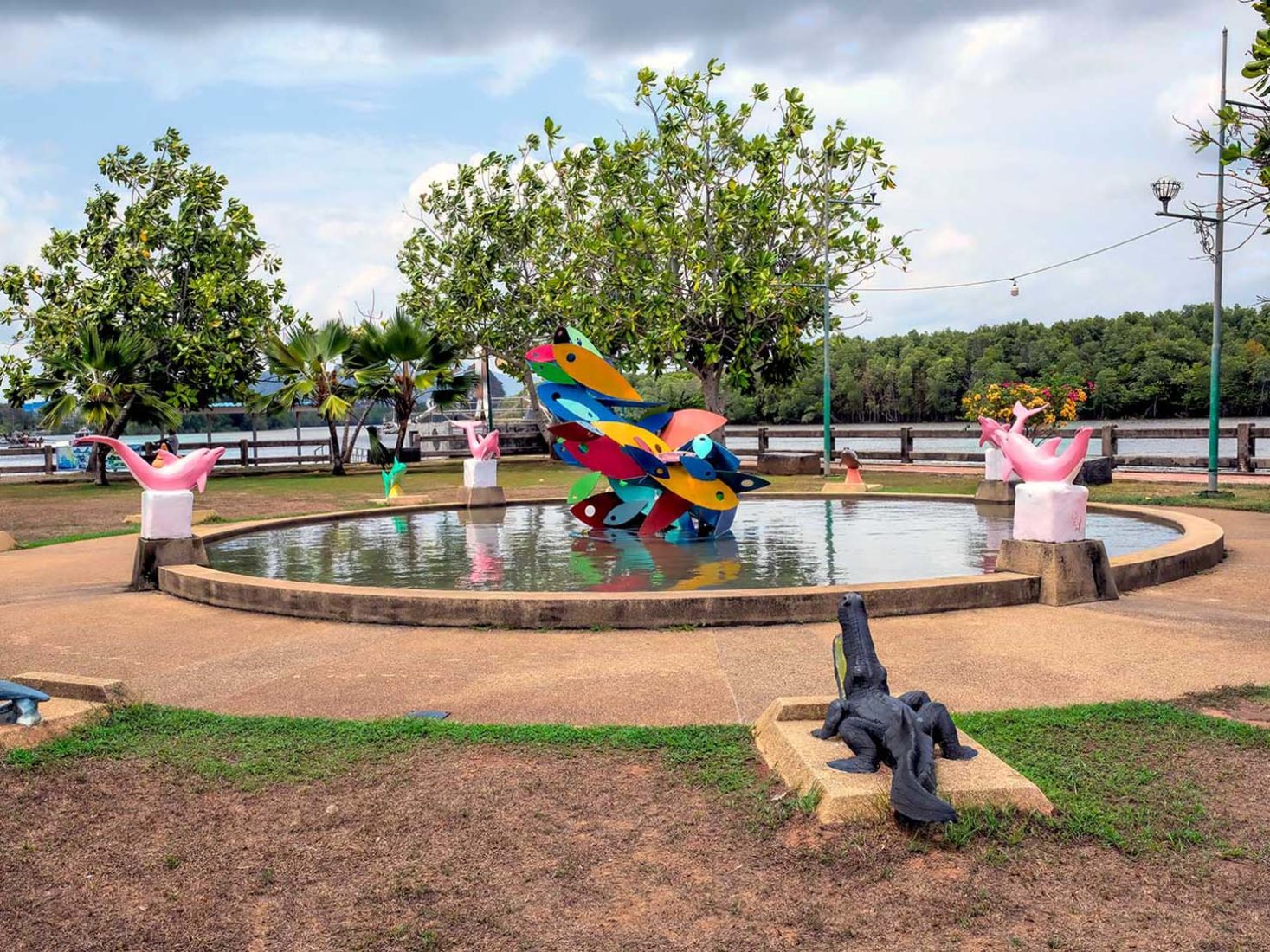
However, Krabi saved the best for last. On the furthest southern point of the promenade, on a delightful sand spit of river beach, I found my favorite piece of art, a sculpture by Professor Emeritus Vichoke Mukdamanee, titled The Story of Love. It reminded me of the frilly paper doilies I used to cut from folded craft paper when I was a kid. It made me think of Valentine’s Day. It made me feel all warm and fuzzy inside.
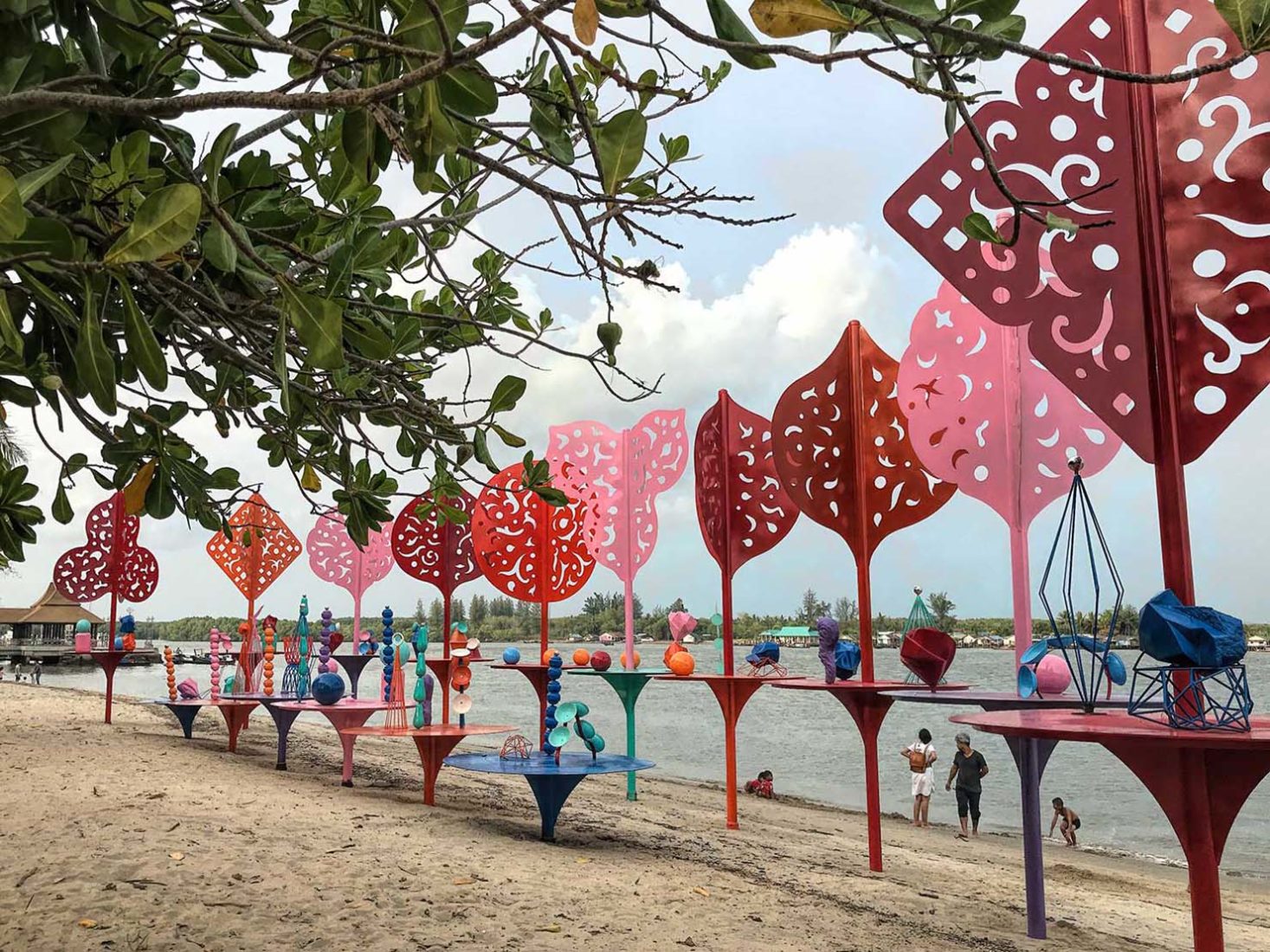
Truly, there is much more to Krabi than meets the eye. The people are friendly, the prices are affordable, and for those who are willing to look, culture is everywhere. This is one Thai town that’s worth more than just an overnight stay.

Great story and beautiful writeup. very mesmerizing. wish i could experience this destination a day.
Thanks for sharing this article about Krabi town Thailand. this is help us blog
Beautiful pictures as always. I felt like I was there with you.
Thanks so much Liz. That’s a high compliment for a writer.
Fantastic article, Barbara! I need to return to Krabi…didn’t realize I missed so much! Hopefully, on my return to Thailand (soon???). Great photos too!!
Sure hope you can come soon, though things aren’t yet improving very much
Barb:
Thank you for sharing your adventures with those of us who cannot go so far anymore… Love your commentary and your photos!
\”Those of us who have had the opportunity to travel are blessed.\”
– Laura Lee
We are both well and truly blessed Laura Lee. Glad you enjoyed the story about Krabi.
Your stories, info and pictures brought a big WOW! to my day. It’s wonderful to see other culture’s beauty. Thank you so much for offering this to us!
Thanks Nancy. I so appreciate your comment and am glad you enjoyed my story about one of the lesser visited towns in southern Thailand.
Thank you for sharing. During times like these when travel is not possible, I enjoy reading adventures from distant shores. Thanks again abs I hope you are safe…
Hi Joy: We’ve been lucky to be able to travel domestically in Thailand until the latest outbreak. I do hope we will get back to more normal times soon.
I enjoyed this journey very much! Glad to see you are still sharing your journey.
Hi Colleen: Yes, the adventure continues, though I confess that I am slowing down a bit these days. Hope you are well.
Great write-up! No doubt you will return. When you do, I recommend visiting the twin karsts just upriver. The one on the left has an easy mangrove trail to it (accessible by road) and the one on the right has the big cave with cave features and prehistoric remains; stairs lead from the boat beach up into the cave–you could do it.
For more art–paintings, sculpture, and beads–you will enjoy a visit to the Andaman Cultural Study Center in town.
Good to know that the trail is improved and doable, even with a cranky hip. Next time, for sure!
Greetings from Phuket just across the sea! Barbara I am so glad I joined you today on a wander. You are right, I’m one of those that have tended to race across to Railay and beyond, without much thought to Krabi. Thanks for showing me the joy that can be had on a wander there.
I know how much you love Railay! Hope you spend a day or two in Krabi the next time you go there and let me know what you think.
I love this story too. So beautiful. Love what you do and how you do it.
When I looked at you I thought…gee she is getting younger…must be from living what she loves, living her joy. Then read what you said about your hips and certain walking and thought, how can that be when she is getting younger? Decided to share this hoping it will make you feel good. Lots of smile to you. You are a beloved treasure of Source expressing and manifesting You! Thank you sooo much! xoxoxoxoxoxoxo
Hi Maraine! What a lovely thing to say. It made me laugh out loud. I wish I was getting younger, I sure don’t relate to the face I see in the mirror these days.
Loved your article about Krabi–definitely on our bucket.list. More later.
LOL – if we ever get to the point where we can travel again freely in Thailand
I just read this. Very interesting area. Thanks for reporting this area – I’m an armchair viewer.
I’m delighted to be able to continue to bring you fodder for your armchair travels, Irene.
I love this story. Your descriptions are so beautiful!
Thanks so much Ellie. Surprised you haven’t been there yourself!